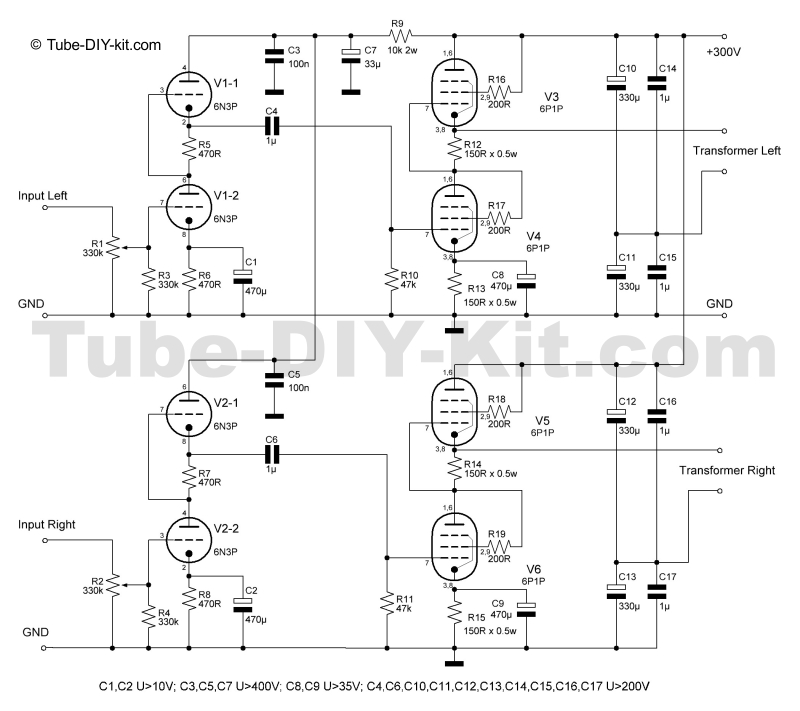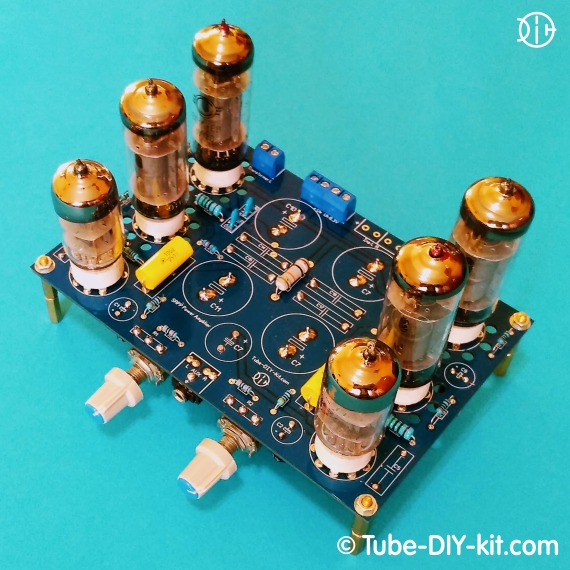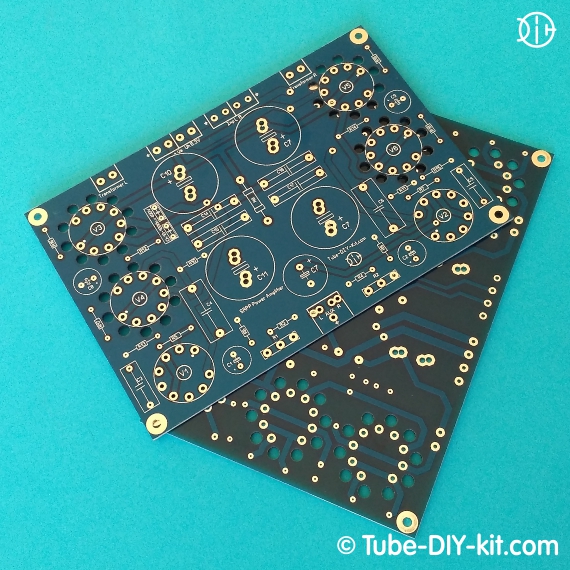Electronic DIY kit: SRPP stereo low frequency amplifier on affordable tubes
A six-lamp, two-stage, low-frequency stereo amplifier built on low-cost and affordable 6N3P and 6P1P tubes. Current consumption: The board size: 125 x 80 mm
The kit comes in the form of a printed circuit board
The kit does not contain scarce parts and winding units. As the output, standard 220/12V transformers with a ~40w overall power were used.
This amplifier is a logical continuation of the development of the SRPP amplifier for computer. Like its predecessor, it does not depend on the parameters of the output transformer. Getting down to design, we set out to create an amplifier on the cheapest and most affordable tubes and squeeze out everything that seems possible from them. As it turned out, there was no need to squeeze, the tubes modes did not go beyond the nominal values, and the amplifier turned out, albeit not with outstanding, but still, with very good characteristics ...
Regards, Developers
Circuit, instructions for assembling and setting SRPP stereo low frequency amplifier on affordable tubes:
 Install on the board and solder the parts according to the circuit diagram and the layout of the board. All capacitors, except interstage C4 and C6, volume controls R1 and R2, an input jack, must be installed under the board. Watch for polarity when installing electrolytic capacitors! All constant resistors and capacitors Ch must remain above the board.
Install on the board and solder the parts according to the circuit diagram and the layout of the board. All capacitors, except interstage C4 and C6, volume controls R1 and R2, an input jack, must be installed under the board. Watch for polarity when installing electrolytic capacitors! All constant resistors and capacitors Ch must remain above the board.
An artificial midpoint cannot be used in this amplifier, since the maximum voltage between the cathode and heater for 6N3P and 6P1P tubes should not exceed 100V. Therefore, only floating heat voltage - without connection to the ground! The filters capacitors marked on the board as Ch are not indicated on the circuit and are recommended for installation when the amplifier is working with extraneous power supplies. In our power supplies, such capacitors are already installed.
Organization of inputs is entirely your initiative. You can use the 3.5 mm Jack jack on the board, solder the jumpers and feed the input from the terminals, or instead of the jack, feed the inputs with a shielded cable from any connector.
A properly assembled amplifier does not need to be tuned. It is recommended, after assembly, to check the current consumption during the first start-up. It should not exceed 80mA. The normal consumption of the amplifier is about 70-75mA, which provides a relatively soft mode of operation of the tubes and their increased durability. Next, check the voltage at the cathodes of the tubes V3 and V5. They should be approximately equal to half the anode voltage. If necessary, the currents of the output stages are regulated by cathodic resistors R12, R13, R14 and R15.
During development, this amplifier was powered from our own power supply. The AC noise was not audible. The need for stabilization of the anode and/or heating voltages is not noted. But we can not guarantee that there will be no noise 50Hz when using an external power supply.
Experiments with output transformers showed that the best results were achieved with 220/12V toroidal transformers (for speaker in the 8 ohm) and overall power from 35W, but the amplifier behaved quite adequately with heating transformers TN series. Such transformers are not expensive and are not in short supply. The main condition is that the overall power should exceed the output by 8-10 times. The use of SE output transformers is not recommended - the magnetic gap decently spoils the sound picture.


